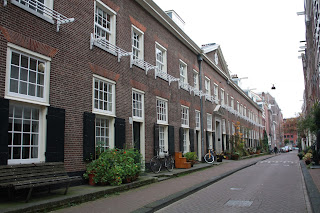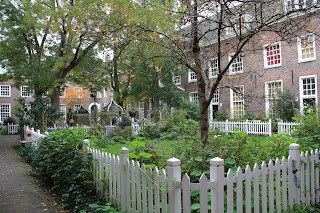The value of art is in the eye of the beholder. In the case of Helene Kroller-Muller, her eye was guided by the art critic H.P. Bremmer. With access to vast wealth from her father's and husband's fortunes, and the judgment of Bremmer, Helene set out to establish a museum of art, purchasing nearly 12 000 pieces from 1907 to 1938, when her museum-home was opened to the public. Helene Kroller-Muller died in 1939, donating her museum-home to the community, as well as the extensive grounds of her estate; what is now Hoge Veluwe park.
To Helene Kroller-Muller, Vincent Van Gogh was superior to all other artists. Introduced to Van Gogh through Bremmer, Helene ultimately purchased hundreds of his works, spending a small fortune in the process.
For a painter who received very little attention in his own lifetime, it is argued that the attention from Helene Kroller-Muller may be what elevated him to the stature of one of the great artists. By establishing the second largest collection of Van Gogh's works in a public museum, Helene and Bremmer may be directly responsible for Van Gogh's recognition today.
Of course, what would any collection of Van Gogh be without Sunflowers?
Helene even bought works that were paying homage to Van Gogh:
In order to establish a true museum - instead of simply a tribute to a relatively unknown (at the time) artist, Helen did broaden her perspective, acquiring works by Picasso, the Dutch artist Gabriel, and several others.
I'm trying to understand the point of pointilism...
Ah yes, this is clearly a violin!
Some people just don't understand modern art.
Outside of the museum itself, there is a picturesque sculpture garden, with works by the likes of Rodin and others. Some of those "others" were rather, um...creative.
The Kroller Muller museum is nestled within the 5000 hectare Hoge Veluwe park, which houses a herd of mouflon, deer, wild boar, and the late Helene's home, the Saint Hubert Hunting Lodge. Despite our efforts, we only saw the latter.
The architect who designed Saint Hubert lodge (to my knowledge, this is not the same architect who designed the St. Hubert chain of restaurants in Quebec) designed the building, grounds, furnishings, and even the crockery. It was meant to be a comprehensive whole, with every piece complementing the overall theme. Helene named the building the Saint Hubert Hunting Lodge after the Christian myth of the nobleman Hubertus.
Hubertus was out hunting on Good Friday morning when a stag appeared with a vision of a cross between its antlers. As Hubertus saw this, he heard the voice of God speak to him, directing him to dedicate his life to the Lord, and to hunt humanely. (The principles of hunting as articulated by Hubertus after this vision include never killing a mother with young in tow, and to kill a sick or injured animal instead of a prized trophy. These principles are still held in high regard among hunters in Europe, today.)
All the online reviews of the Kroller Muller museum and Hoge Veluwe are positive. While I thoroughly enjoyed our excursion, I suspect that the reviews may be biased, in that anyone who makes the effort to take a train, then a bus, then another bus, then a hike or bike ride in order to get to the museum already is a huge fan of the works of Van Gogh that are housed there. The review is nearly guaranteed to be positive. In any case, it is unlikely that I will ever return to the Kroller Muller, though I am happy I went.
As we returned to Utrecht for the last time, we contemplated our overnight bus to Munich. The last bus trip on Eurolines was pretty uncomfortable, and neither of us was looking forward to 11 hours on a noisy, cramped bus that smelled of cigarette smoke. Saying our good-byes to Paul and Stella - who had generously hosted the majority of our stay in Holland - we were pleasantly surprised when our Flixbus showed up - clean, spacious, and comfortable. I settled in for the night, ready to wake up in Munich.
To Helene Kroller-Muller, Vincent Van Gogh was superior to all other artists. Introduced to Van Gogh through Bremmer, Helene ultimately purchased hundreds of his works, spending a small fortune in the process.
For a painter who received very little attention in his own lifetime, it is argued that the attention from Helene Kroller-Muller may be what elevated him to the stature of one of the great artists. By establishing the second largest collection of Van Gogh's works in a public museum, Helene and Bremmer may be directly responsible for Van Gogh's recognition today.
Of course, what would any collection of Van Gogh be without Sunflowers?
Helene even bought works that were paying homage to Van Gogh:
Feeding off Helene's enthusiasm for Van Gogh, locals demonstrate their own enthusiasm for the Dutch master. (To the right of the house and tree...)
Ah yes, this is clearly a violin!
Some people just don't understand modern art.
Outside of the museum itself, there is a picturesque sculpture garden, with works by the likes of Rodin and others. Some of those "others" were rather, um...creative.
The Kroller Muller museum is nestled within the 5000 hectare Hoge Veluwe park, which houses a herd of mouflon, deer, wild boar, and the late Helene's home, the Saint Hubert Hunting Lodge. Despite our efforts, we only saw the latter.
The architect who designed Saint Hubert lodge (to my knowledge, this is not the same architect who designed the St. Hubert chain of restaurants in Quebec) designed the building, grounds, furnishings, and even the crockery. It was meant to be a comprehensive whole, with every piece complementing the overall theme. Helene named the building the Saint Hubert Hunting Lodge after the Christian myth of the nobleman Hubertus.
Hubertus was out hunting on Good Friday morning when a stag appeared with a vision of a cross between its antlers. As Hubertus saw this, he heard the voice of God speak to him, directing him to dedicate his life to the Lord, and to hunt humanely. (The principles of hunting as articulated by Hubertus after this vision include never killing a mother with young in tow, and to kill a sick or injured animal instead of a prized trophy. These principles are still held in high regard among hunters in Europe, today.)
All the online reviews of the Kroller Muller museum and Hoge Veluwe are positive. While I thoroughly enjoyed our excursion, I suspect that the reviews may be biased, in that anyone who makes the effort to take a train, then a bus, then another bus, then a hike or bike ride in order to get to the museum already is a huge fan of the works of Van Gogh that are housed there. The review is nearly guaranteed to be positive. In any case, it is unlikely that I will ever return to the Kroller Muller, though I am happy I went.
As we returned to Utrecht for the last time, we contemplated our overnight bus to Munich. The last bus trip on Eurolines was pretty uncomfortable, and neither of us was looking forward to 11 hours on a noisy, cramped bus that smelled of cigarette smoke. Saying our good-byes to Paul and Stella - who had generously hosted the majority of our stay in Holland - we were pleasantly surprised when our Flixbus showed up - clean, spacious, and comfortable. I settled in for the night, ready to wake up in Munich.

































































